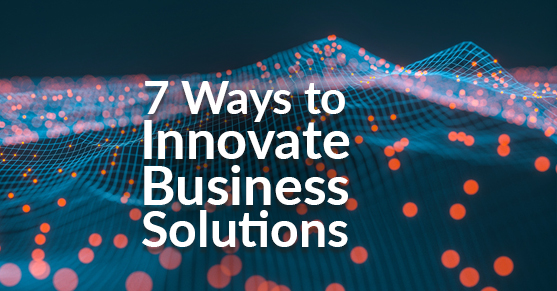Innovation can keep your company on its growing edge. Innovation is a process of either using an existing solution in a new way or creating a new solution to meet a need. Either way, innovation adds value to the end-user. We will explore seven ways to innovate solutions for visionary companies.
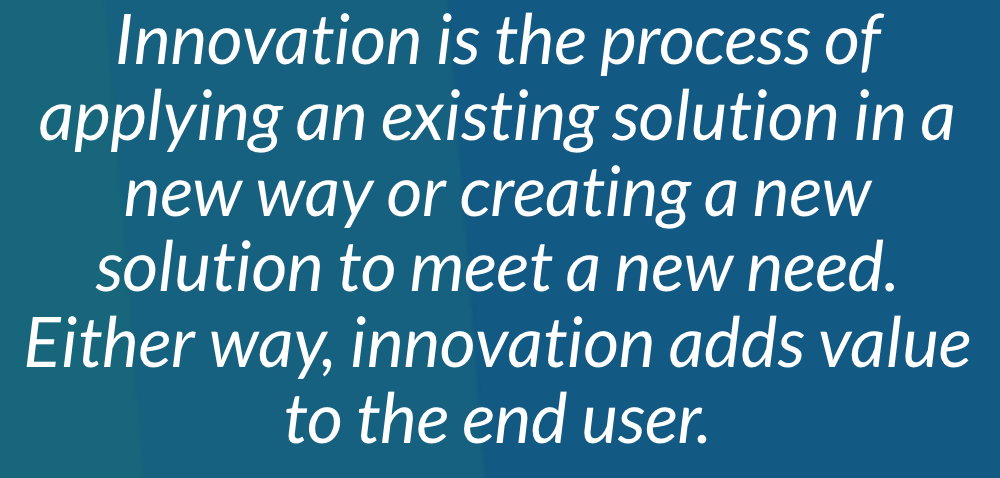
A recent survey found 93% of enterprise-level executives think innovation is essential to their business, but only 34% believe they had a well-defined strategy in place. It is also interesting to note that people are good at seeing where innovation has occurred through the impact of it but the business structure doesn’t always have a way to systematically innovate. Sometimes there is a perception that innovation is just for startups but, in fact, established companies often have the advantage of resources when innovating. As just one example, consider Microsoft with Xbox and Azure and SharePoint.
The process of converting a concept into a deliverable that creates value for your customer is the basis for all business. Generating a concept in an imaginative way that distills greater or different or unexpected value from existing or new resources yields positive change for your customers. That’s the essence of innovation. The barometer of success for innovation is that it adds value to the end-user.
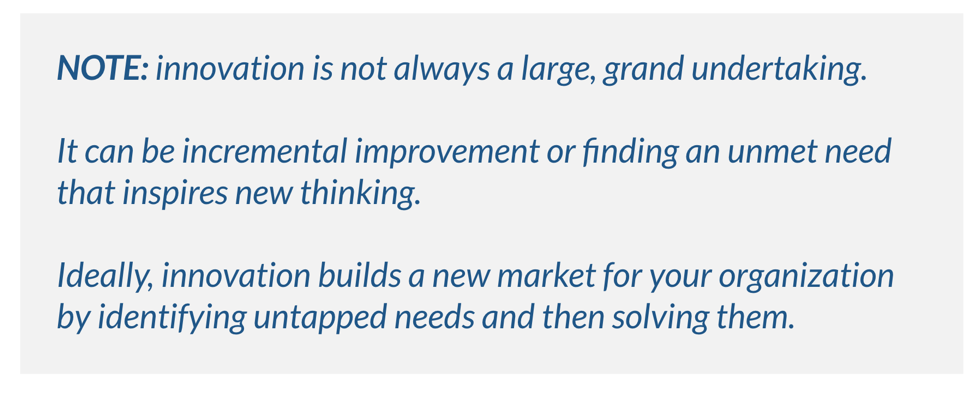
The following are seven different ways to create and support innovation in companies.
1. Dynamic Evolution
Dynamic Evolution is the natural transformation caused by incremental changes over time. There is a systematic method, borrowed from the manufacturing world, called the Theory of Constraints. Essentially, it is a process of continuous improvement by resolving limitations one at a time.
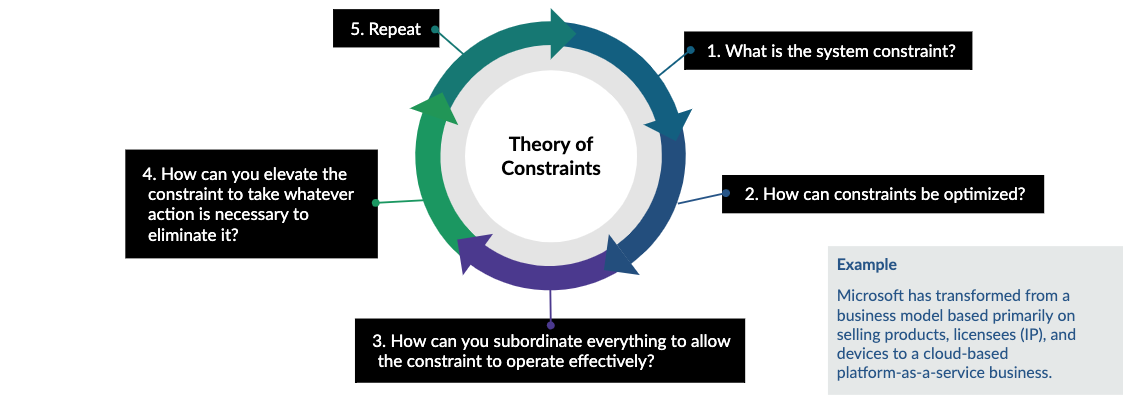
Throughout the process of innovation, it is important to be aware of potential inertia, stagnancy and comfort zones. These three factors surface where there is resistance to change in your organization, processes, protocols, workflows and more. When applying the Theory of Constraints, it is vital to ask, where is the limitation? How can we shift that? What do we need to do to support it?
The key is to identify the choke point, meaning what is stalling or stopping flow in the process, then optimizing it. The goal is to figure out what can be done to get as much capacity from that constraint without undergoing expensive changes or upgrades. As you make changes, you look to see if the constraint has moved or been eliminated; when that happens, you look for the next most significant limitation or constraint in the system. Making such systematic and incremental changes can yield innovation.
2. Radical Transformation
Innovation created through Radical Transformation is caused by major breakthroughs in technology or process. These are things that are game changers, industry disruptors, category creators, and all-around big, big deals.
Harvard Business Review says, “Radical innovation focuses on long-term impact and may involve displacing current products, altering the relationship between customers and suppliers, and creating completely new product categories.”
Google is known for innovation through radical transformation. They actually have an 80-20 policy where every employee spends 20% of their time on creative side projects. Gmail came out of that, AdSense came out of that, and AdSense (at least at one time) created something like 20% of Google’s annual revenues. Entire industries change from innovation created through radical transformation, just look at online advertising as a result of AdSense to see that in action.
3. Disruptive or Deconstructive Innovation
Disruptive Innovation occurs when a catalyst creates a new market and value network, displacing established marketplace leaders and replacing earlier technologies. The Blue Ocean Strategy describes this in a book that talks about how companies will compete on the same factors, price or product, causing a “red ocean” of bloody carnage in the marketplace as everyone tries to feed on the same thing. The goal is to find uncontested “blue ocean” to sail in business; hence, the name: “Blue Ocean Strategy.” This happens by asking four questions: what needs to be eliminated, what needs to be reduced, what needs to be increased, and what needs to be innovated?
When developers have to rework code to untangle a problem, or marketers have to break down marketing campaigns to figure out why there were “unexpected” results, they are doing a process of deconstruction. Breaking down the current situation — or deconstructing it — helps get back on track. Sometimes, in more extreme cases, deconstruction completely eradicates the existing structure to start over again from a zero-based beginning.
A flavor of deconstruction is “creative deconstruction” where deconstruction seeks to take apart a project, process or result with a fresh perspective to generate new possibilities.
If you’re a NASCAR fan, you probably know who Jack Roush is (he’s a famous engine builder). A reporter once asked him, “What makes you so special? What makes your engine so special?” He said, “Well, we put together the engine, we put it on the testing machine, we open it full throttle, and then we go and take a break. We go to get a coffee and a lunch, whatever, and just let that thing go until it breaks. Then we come back in and look at what happened to it. We take it apart. We figure out what failed, then build that piece bigger, better, faster, bolder, whatever. And then we do it again.” Jack Roush breaks his own engines in a process of deconstructive innovation. From a digital enterprise point of view, that’s the process of taking an experience apart for the purpose of adding greater value to the customer.
The difference between deconstructive innovation and deconstruction is that deconstruction happens to solve a non-working issue or completely demolishes what was there to clear the way for something new. Deconstructive innovation seeks to leverage what exists to create something even better for the customer experience.
4. Discontinuous Innovation
Discontinuous Innovation happens when a new technology is applied to solve an existing need in a fresh way. There are many examples of this, including a famous one from Hewlett Packard (HP). In 1985, HP was losing market share. They had invented inkjet technology and used it to create a new paradigm that, eventually, drove the then-standard dot matrix printers out of the market. As a result, HP became the leader in the personal computer printer market.
5. Open Source, or Crowd-Sourced, Innovation
Open Source or “Crowd-Source” Innovation comes from the 17th-century when there were six sailing powers in Europe who initiated a competition to find a precise way to navigate the oceans. This competition inspired the great minds of the time — Galileo, Christian Huygens, and others — to come up with solutions to the dilemma. That was a very early form of open innovation where everybody was trying to compete to fix a general problem. The idea is the transparent utilization of external contributors to achieve a greater good, a bigger outcome.
Open Source Innovation promotes free redistribution and access to the end product or technology and implementation details. In business, it means people outside a company can contribute to strategic goals and share intellectual property. The more information gained and shared, the more educated the decisions and results. (In contrast, closed innovation relies on internal expertise [ideas], along with an iterative process for managing that expertise, to sustainably produce new businesses. Information is kept within the company.)
So what are the benefits of open innovation? There are many: engaging larger audiences, having more relevant audiences, improving cost efficiencies, involving customers, research and development, improving the brand value, the PR, you get good customers, create good karma, attract lucrative partnerships, find new talent, and more.
In 2006, Netflix launched an open innovation challenge called the Netflix Prize to find a filtering algorithm for improving user movie or series suggestions by 10% compared to what existed at the time. They offered a grand prize of $1 million. In just over a year, more than 40,000 teams from 186 countries entered the competition. In just under three years, two teams had found a way to improve suggestions by more than 10%, one of which won the grand prize.
However, the winning team’s solution was too costly to engineer and had privacy concerns. So Nextflix actually went with one of the runner-ups instead for a cost-effective improvement rate of 8.43%. Ultimately, Netflix got what they wanted, or came close to it, and engaged a lot of people globally. That only helped their brand become known around the world.
6. Engagement Innovation
Engagement Innovation is about creating holistic experiences through emotional engagement. One methodology comes from Brian Solis of the Altimeter Group called Digital Darwinism. The idea is that consumer behavior evolves the pace of society and technology, which might be faster than an organization’s ability to adapt. Those organizations that cannot adapt will become obsolete and no longer exist. That’s Darwinism. The opportunity is to become aware of where your organization is not adapting so you can make changes to stay competitive. This, in turn, can create innovation.
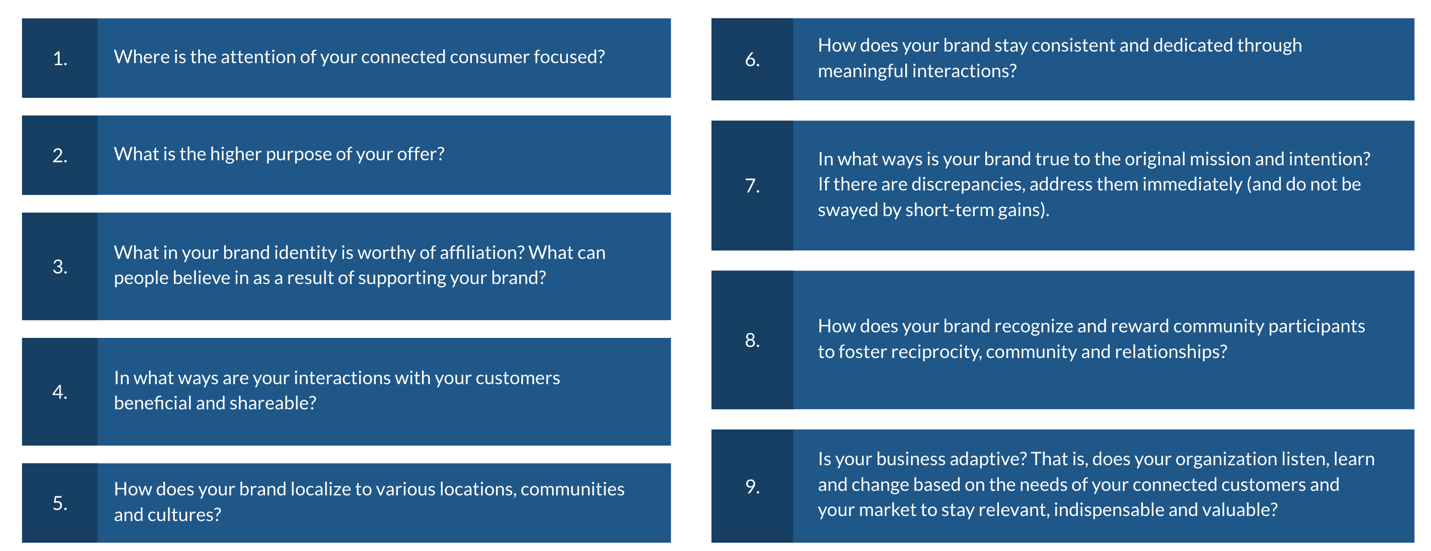
Digital Darwinism focuses on improving your systems, your protocols, and your processes, your workflows through a customer-centric commitment. And what that means is you need to have a unified view of your customer. You need to know what’s going on and wrap all your systems around your customers. If you don’t have a unified view of your customer in today’s digital business environment, XTIVIA can hook you up. (Yes, that was a shameless plug.)
Your unified view of your customer can show where there are glitches in the proverbial matrix; when they bump into little barriers, you can see it. You want to synchronize your marketing, sales, and service or delivery systems around what your customer is experiencing so you can improve the processes that create their buying journey and brand experience with your company.
7. Customer-Led Innovation
Customers expect industries to be innovative. It’s the nature of business today. Most companies try to keep up with their competition; however, companies really should be trying to keep up with their customers. That is Customer-Led Innovation based on the dynamic conversations customers are having, their emerging needs, the problems that are presenting as an effect of something else happening; these are factors that are important to customers. This is innovation that uses guidance and insights from customers to create new solutions.
Social media is obviously a go-to place for keeping your finger on the pulse of what’s happening with your customers. But that’s not the only place. Your customer service calls, your emails, the returns, the online reviews, their buying patterns and more. You want to watch your analytics and KPIs (Key Performance Indicators) to stay on top of what your customers need, want and expect — their buying patterns, their consumption preferences — so you can meet them in that place, that’s Customer-Led Innovation. Where are your customers giving you guidance about your company’s next steps? What are your customers talking about? The answers can create fresh opportunities for your company.
Tie Innovation with Business Strategy for Effective Results
Innovation must achieve a relevant outcome or it has no value. Innovation should be built into business growth objectives to “future-proof” for an unknown future. A powerful strategy to ensure this is when the CEO creates a mandate for growth through innovation and is prepared to invest in the people who can see solutions in new ways.
Additionally, agility is not just about flexible technology and fast development cycles — it is about pacing and shaping customer needs and wants. Truly understanding your customers through deep conversational dialogue is a sustainable competitive advantage because it naturally lends itself to dynamic, and sometimes, innovative solutions. When you aren’t able to talk with your customer audience directly, be sure to listen to those who are — your front-line staff, salespeople, customer service representatives, on-site support, etc.
When you want to have a conversation about business strategy for your organization, please let me or your XTIVIA advisor know — we love to talk through digital transformation, strategic innovation and how to achieve business targets! To see more about these kinds of topics, click on Perspectives OR head over to XTIVIA’s Youtube channel and look for Live Sessions videos. “See” you there!

